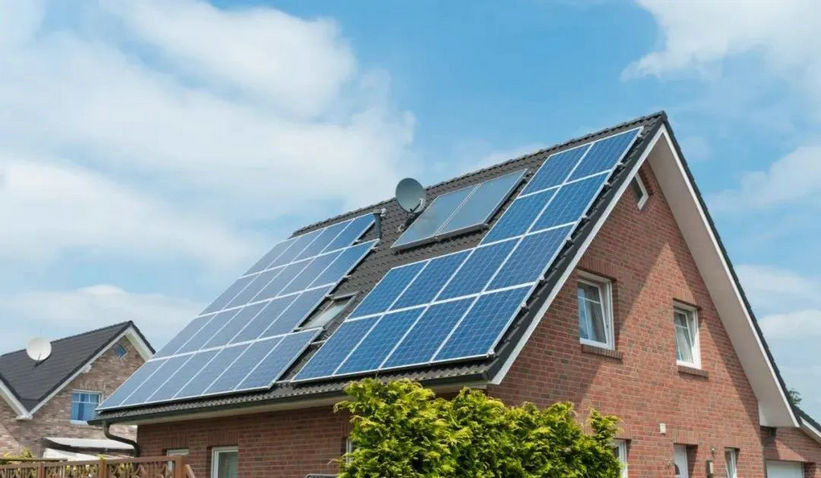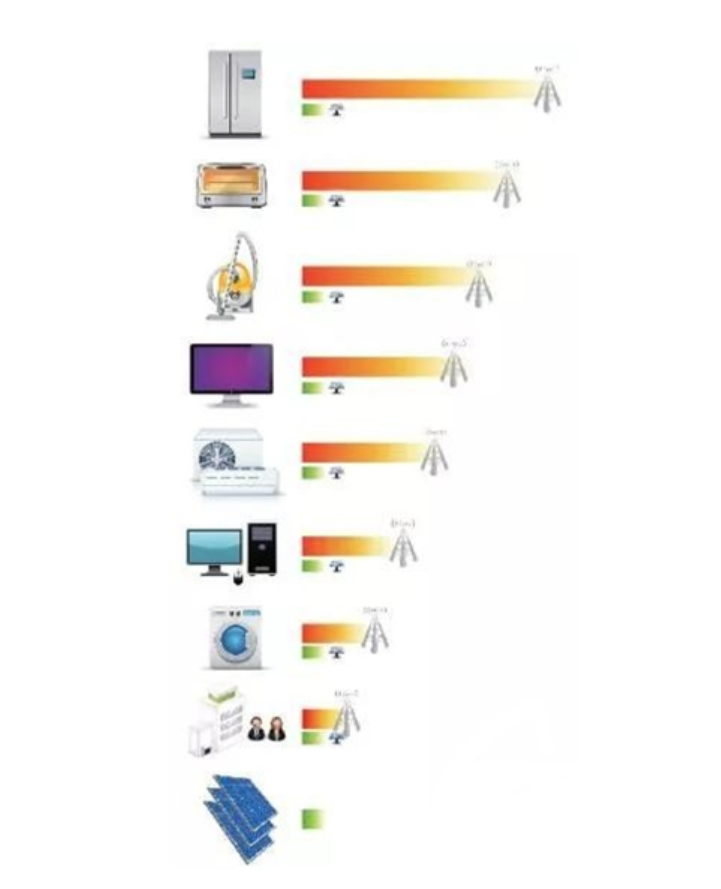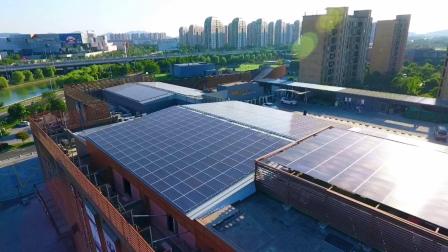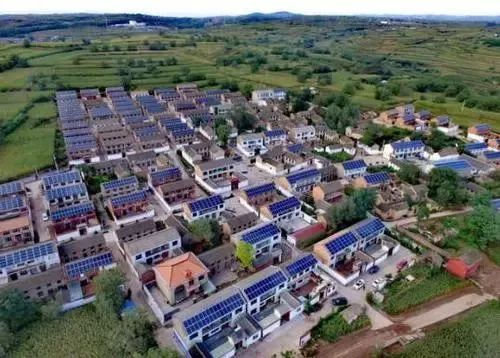| Is there radiation, pollution and noise in photovoltaic power generation? Here c |
| Release time:2023-03-10 11:12:19| Viewed: |
Photovoltaic power generation directly converts light energy into DC power through the characteristics of semiconductors, and then converts DC power into AC power that can be used by us through inverters.
The photovoltaic system is composed of photovoltaic modules, brackets, DC cables, inverters, AC cables, power distribution cabinets, transformers, etc. The brackets are not charged and will not generate electromagnetic radiation naturally. Photovoltaic modules and DC cables, which contain DC current, have no change in direction, and can only generate electric field, not magnetic field.
Although the output transformer is AC, its frequency is very low, only 50Hz, and the magnetic field generated is very low. Inverter is a device that converts direct current into alternating current. There is power electronic conversion in it. The frequency is generally 5-20KHz, so it will generate alternating electric field, so it will also generate electromagnetic radiation. The state has strict standards for electromagnetic compatibility of photovoltaic inverters.
(Radiation comparison of various household appliances and photovoltaic modules)
Compared with household appliances, the electromagnetic radiation of photovoltaic inverters is about the same as that of laptops, but lower than that of induction cookers, hair dryers and refrigerators.
Therefore, the construction of photovoltaic power stations will not only do harm to human health, but also provide the earth with green and clean high-quality energy, which is the direction of human energy development in the future.
1. The manufacturing process is not "high energy consumption"
I don't know how many people slander that photovoltaic power generation is high pollution and high energy consumption in the manufacturing process. Such rumors have spread more than once.
Photovoltaic manufacturing industry mainly includes four links: crystal silicon purification, silicon ingot wafer, photovoltaic cell and photovoltaic module. Among them, crystalline silicon purification needs to be completed under high temperature conditions, which consumes a lot of electric energy, accounting for 56% - 72% of the total energy consumption, and is the most important chemical production process in the industrial chain; The "high pollution" comes from the by-products produced in the production of high-purity polysilicon.
Crystalline silicon purification is indeed a large-scale and energy-intensive industry. However, this does not mean that photovoltaic products are high energy consumption. It is necessary to convert the total energy consumed in the production of unit photovoltaic modules into electricity consumption, and compare it with the lifetime power generation of modules. In 2015, the Ministry of Industry and Information Technology issued the Specification and Conditions for the Photovoltaic Manufacturing Industry, which stipulates that the power consumption in the production process of polysilicon must be less than 120 kWh/kg; The energy consumption level of new construction, reconstruction and expansion projects must be less than 100 kWh/kg, which should be relatively close to the current world advanced level.
Based on this conversion, the photovoltaic power consumption meets the national regulations, and the production of one-watt photovoltaic modules requires 0.6-1.2 kilowatt-hours of electricity. According to the 25-year life of photovoltaic modules, photovoltaic power generation is far greater than production power consumption.
2. No light pollution
Light pollution is threatening people's health. In daily life, people's common light pollution conditions are mostly the dizziness of pedestrians and drivers caused by the reflection of mirror buildings, and the discomfort caused by unreasonable lighting at night.
So everyone is worried about whether there is light pollution when installing photovoltaic modules. In fact, the visible light reflection coefficient of ordinary tempered glass is 9%~11%, which will not cause light pollution. The photovoltaic module uses the same type of glass as the building, and will not cause light pollution.
The source of light pollution is visible light. The cells of the power generation unit inside the PV module will absorb visible light and convert it into electric energy, which will further reduce the reflection of visible light.
3. No noise and emission
These two points are relatively easy to understand. Photovoltaic power generation is the conversion of solar energy into electricity, and it is the photoelectric conversion. There will be no noise and no pollution emission in the process. It is very suitable for installation on residential and industrial and commercial roofs.
In recent years, distributed photovoltaic power generation has developed rapidly, and most of them are also interested in photovoltaic power generation, which is suitable for installation on the roof, has the function of energy conservation and emission reduction, and can also be insulated and waterproof.
Many factories and residents have installed photovoltaic power stations on their roofs. We can actually feel the noise-free and emission-free power generation process.
Disclaimer: If the videos, pictures and text used in this article involve copyright issues, please inform us at the first time, and we will immediately delete them without any commercial use! |







